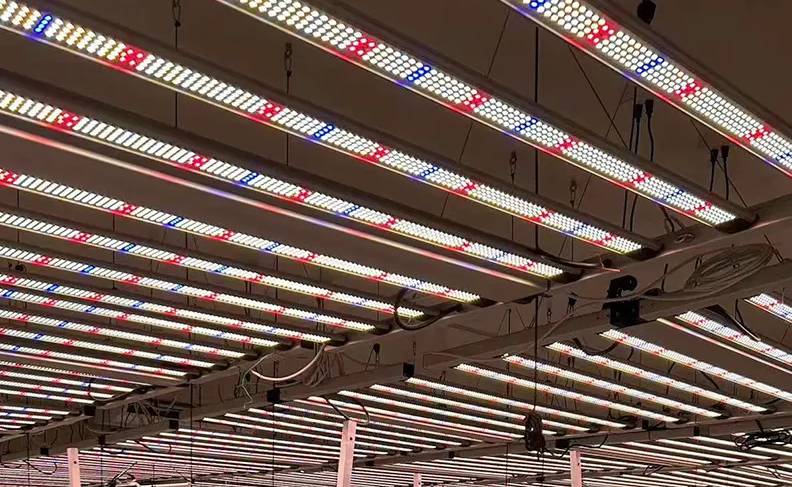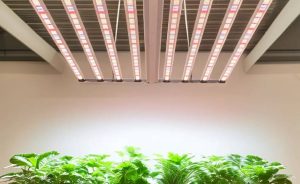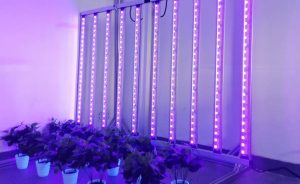
Samsung LM281B vs LM301H LED Diodes: What Plant Growers Need to Know
When building or purchasing a grow light for your indoor garden, the diodes used in the fixture can make a significant difference in plant performance and electricity costs. Samsung’s LM281B and LM301H are two popular LED diodes frequently used in horticultural lighting, but they have distinct differences that can impact your growing results. Let’s break down what sets these diodes apart and why it matters for your plants.
Core Differences at a Glance
The Samsung LM281B and LM301H diodes differ in several key aspects:
- Efficiency: LM301H offers higher photosynthetic photon efficacy (PPE)
- Cost: LM281B is more budget-friendly
- Light spectrum: Subtle differences in spectral output
- Heat management: LM301H generally runs cooler at the same power
- Lifespan: LM301H typically lasts longer under similar conditions
Efficiency: The Numbers That Matter
The LM301H is Samsung’s premium horticultural diode, boasting approximately 15-20% higher efficiency than the LM281B. In practical terms:
- LM301H: Achieves around 2.9-3.1 μmol/J (micromoles per joule)
- LM281B: Typically delivers about 2.3-2.6 μmol/J
This efficiency difference means that grow lights using LM301H diodes can produce more photosynthetically active radiation (PAR) while consuming less electricity. For commercial growers, this efficiency gain can translate to substantial energy savings over time.
Cost Considerations
The improved performance of the LM301H comes with a price premium:
- LM281B: More affordable, making it popular for budget-conscious growers and entry-level grow lights
- LM301H: Generally costs 20-30% more, positioning it for premium grow light fixtures
For home growers, the question becomes whether the improved efficiency justifies the additional upfront cost. The answer depends on your growing goals, electricity rates, and how intensively you plan to use your grow lights.
Spectrum Quality
While both diodes produce light suitable for plant growth, there are subtle spectral differences:
- LM301H: Offers a slightly more refined spectrum with better coverage in the deep red (660nm) range that’s crucial for flowering
- LM281B: Provides good overall coverage but with slightly less spectral refinement
For most leafy greens and vegetative growth, these differences may be negligible. However, for flowering plants or crops where yield is paramount, the LM301H’s spectrum advantages may contribute to better results.
Heat Management and Longevity
The higher efficiency of the LM301H translates to better thermal characteristics:
- LM301H: Converts more energy to usable light rather than heat, typically running 3-5°C cooler than the LM281B at the same power levels
- LM281B: Produces more heat, which can impact diode longevity and potentially require more robust cooling solutions
This heat difference contributes to the LM301H’s longer rated lifespan, making it a better choice for fixtures that will see heavy, continuous use.
Making the Right Choice for Your Garden
When deciding between grow lights using these diodes, consider:
Choose LM301H-based lights if:
- You’re growing commercially or intensively
- Electricity costs are a significant concern
- You’re growing light-hungry flowering plants
- You want maximum performance and longevity
Choose LM281B-based lights if:
- You’re growing casually or seasonally
- You’re on a tighter budget
- You’re growing less demanding plants
- You’re new to indoor growing and want to start with a lower investment
The Bottom Line
The Samsung LM281B represents excellent value for casual growers on a budget, while the LM301H delivers premium performance for those seeking maximum efficiency and output. Both will grow plants effectively, but the LM301H’s advantages become more meaningful in commercial settings or when growing more demanding crops.
For many home growers, a quality light using LM281B diodes will provide excellent results at a more accessible price point. However, if you’re looking to maximize yields or grow in a space where heat management is crucial, the investment in LM301H technology may be justified by the long-term benefits.
Remember that diode type is just one factor in a grow light’s overall performance. Driver quality, thermal design, and appropriate spectrum blending are equally important considerations when selecting the ideal lighting solution for your indoor garden.



No Comments